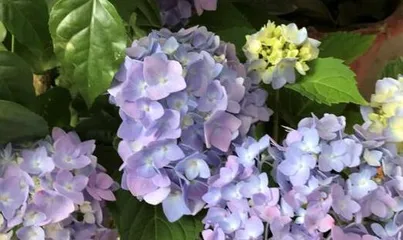Hydrangeas, as a beautiful garden plant, are a bright sight in summer. However, under high summer temperatures, hydrangeas are susceptible to heat waves and drought and require proper care and management. This article will detail how to properly care for hydrangeas to help you create a beautiful garden.

Choose the right location
When choosing a location to plant hydrangeas, select a place with sufficient sunlight, good drainage, and good ventilation. Because hydrangeas love sunlight, but hot and humid environments can easily lead to pests and diseases.
Watering in a timely manner
Summer is the growing season for hydrangeas, and they need moderate watering. However, overwatering can lead to root rot and affect their growth. Therefore, the amount of water should be adjusted according to weather conditions and soil moisture.

Timely fertilization
Summer is a critical period for hydrangea growth and reproduction, so timely fertilization is necessary, but not excessive. You can choose to use compound fertilizer or organic fertilizer to ensure the healthy growth of hydrangeas.
Pruning
Hydrangeas have strong reproductive ability, and you can prune some old leaves, dead branches, and seedlings to allow them to better allocate nutrients and space. At the same time, timely pruning of flower branches can make the hydrangeas more beautiful.
Pest and disease prevention
High temperatures and humidity in summer are a high-incidence period for pests and diseases in hydrangeas. During the maintenance process, pay attention to preventing and controlling pests such as aphids and mites, as well as diseases such as mold and powdery mildew.

Suitable environmental temperature
High summer temperatures can easily affect the normal growth of hydrangeas. If the ambient temperature is too high, you can lower the temperature by methods such as shading to provide a suitable growing environment.
Reasonable irrigation
Hydrangeas need a moderate amount of water to grow, but the irrigation method should be reasonable. Do not water directly on the petals to avoid affecting the flowering effect. Methods such as drip irrigation or spray irrigation can be used to ensure even distribution of nutrients and water.
Observation
In the process of caring for hydrangeas, it is necessary to carefully observe their growth status and condition. If you find that the leaves start to turn yellow or the flowers wither, timely measures need to be taken. At the same time, pay attention to weather changes to make corresponding maintenance adjustments.
Effective drainage
Under high temperature and humidity in summer, hydrangeas are easily affected by waterlogging. Effective drainage measures should be taken to ensure the soil's air permeability and drainage.
Mulching for insulation
In high summer temperatures, you can add some mulch around the base of the hydrangeas to maintain soil moisture and temperature. But be careful not to affect its normal growth.
Avoiding rain exposure
Rainy weather in summer can easily lead to diseases and damage to hydrangea flowers. Pay attention to avoiding rain exposure, and you can use rain shelters on rainy days to protect their normal growth.
Applying fungicides in moderation
Under high temperature and humidity in summer, hydrangeas are susceptible to diseases such as mold and powdery mildew. You can spray fungicides in moderation, but be careful not to overuse them.
Paying attention to the flowering period
The flowering period of hydrangeas is generally in summer, so it is necessary to pay attention to the start and end time of the flowering period. If measures need to be taken after the flowering period ends to promote its growth for the next year.
Making good use of pruning
Pruning is an important part of the hydrangea care process, and reasonable pruning can improve its growth and flowering effect. Making good use of pruning can make hydrangeas more beautiful.
Through the above care methods, we can better protect hydrangeas and create beautiful garden landscapes in summer. Of course, it is also necessary to formulate corresponding care plans according to specific conditions to ensure the healthy growth of hydrangeas.